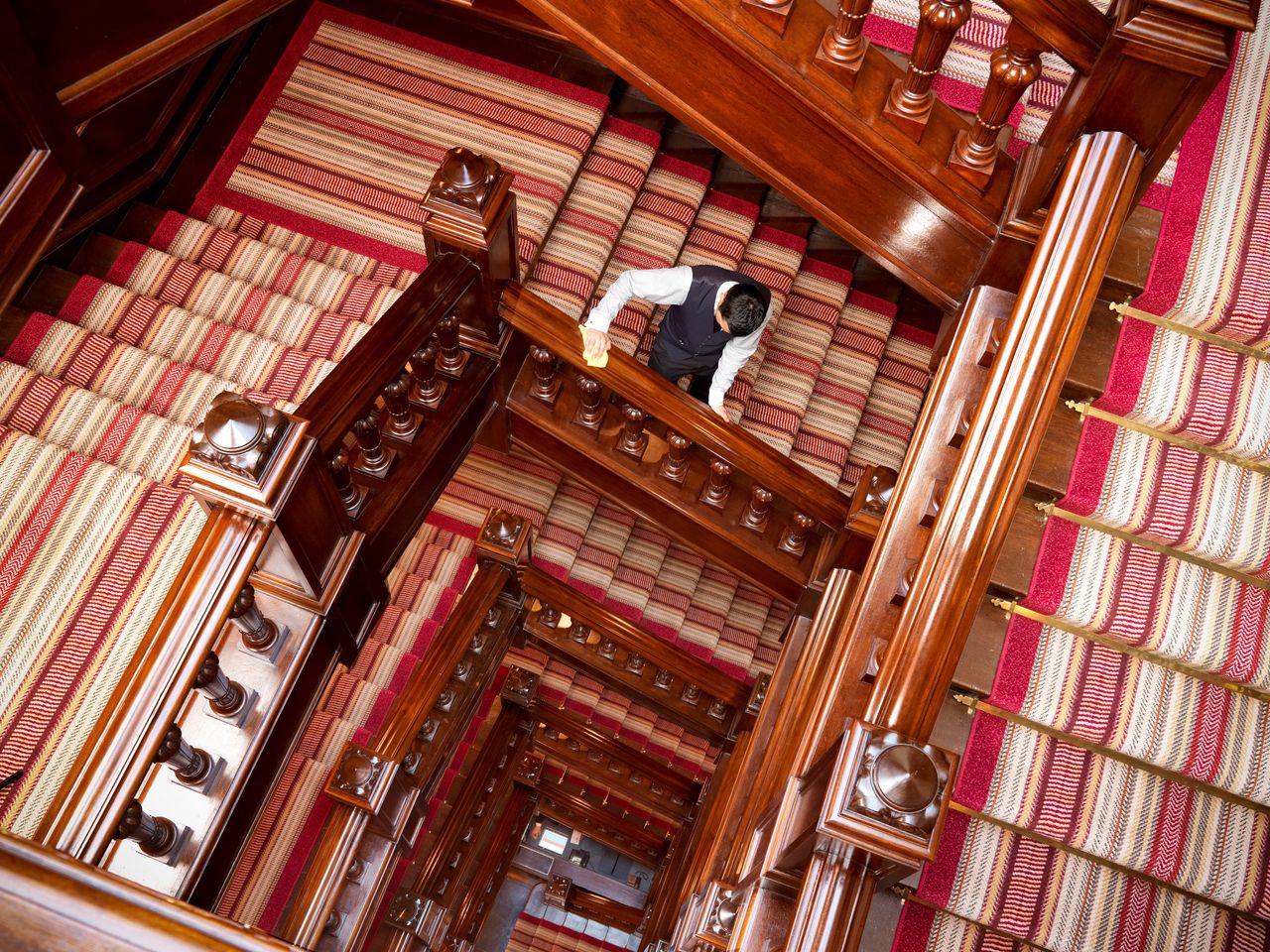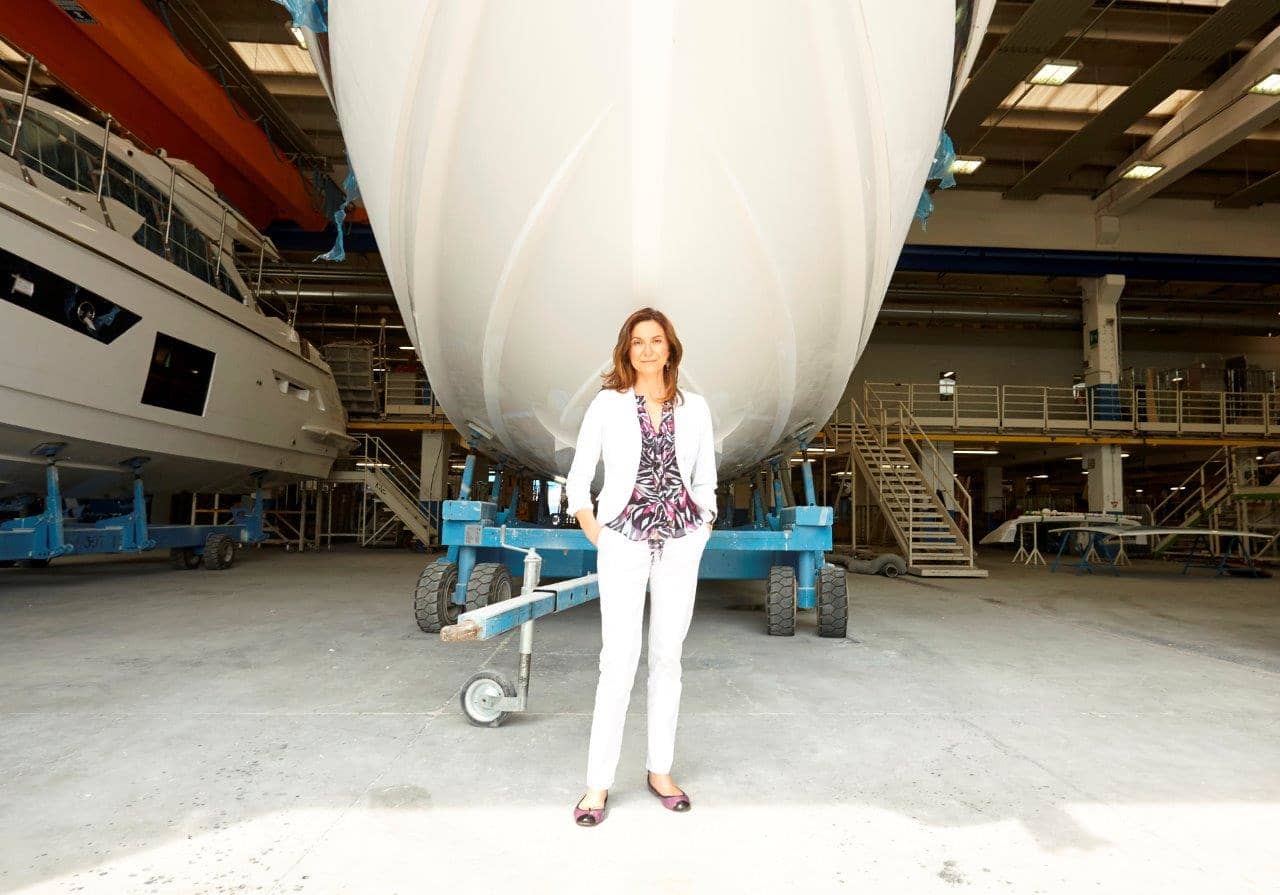The Golden Keys: Inside the High-Stakes World of the Luxury Concierge
Corrado Bogni had less than 24 hours to get the diamond to Hong Kong. He would give up his Christmas Eve to accomplish the mission if need be. Still, could he find a last-minute flight out of London during one of the busiest travel times of the year?
It was 2006. A desperate hotel guest who frequented the five-star Connaught hotel in Mayfair trusted Bogni more than anyone else in the U.K. capital, because it is the pledge of the luxury hotel concierge to accomplish anything necessary, whenever necessary—no questions asked.
Welcome to the high-stakes world of concierges in the world’s leading luxury hotels.
“There really are only two rules to serving as a concierge,” Bogni says, recalling his journey to China and back. “We cannot get you drugs or ‘companionship.’ Other than that, we’re paid to get anything done without the guest having to worry about how we do it.”
The familiar Connaught guest would be working out of Hong Kong for the holidays and wanted to get a special cut of a glittering yuletide gift to his beloved in the Far East before Christmas Eve. The diamond needed to be picked up in Belgium and transported to the Connaught in Hong Kong, so the guest could present it under the Mistletoe faster than Santa could drop it down a chimney.
Bogni explains he took it as an honour that the generous client would entrust him with such a valuable trinket. “He was a well-known guest who asked for help,” Bogni says. “My approach as a high-level concierge is always to say ‘yes’ to a request and then find a way to make it happen via my personal endeavours and with the help of many fellow concierge colleagues around the world.”
Bogni, who has since taken a job at the luxury golf community Les Bordes in France, insists his peers rely on each other with growing frequency in the post-pandemic world. According to Andrew Sturge, head concierge at the London boutique hotel Flemings, Covid-19’s aftermath means supply shortages, business closures, transportation problems, and other snags that often hinder a concierge in sourcing whatever he or she needs.
“We (concierges) began relying on each other for ideas on how and where to source anything we need,” he says from the Flemings’ front desk. “We formed a new, unofficial network of support with our cell phones almost becoming walkie-talkies texting and calling back and forth. All that matters is getting what our guests need as quickly as possible.”
‘Clef d’Or’
Like all of his peers sending their requests across the new network, Sturge wears the Golden Keys, or Les Clef d’Or, on his lapel. Anyone who wears the pin has completed a five-year stint as a concierge before undergoing an application and approval process lasting about five months, according to fellow member Simon Thomas of the elite Lanesborough Hotel near Hyde Park.
With his own Golden Keys on display, Thomas and his Lanesborough colleagues confront a sea of requests on a daily basis. “One of our regular guests was a roller skate champion in the U.S. who wanted to have a space to practice,” Thomas says. “We created a huge roller skate rink in our ballroom.”
Thomas also cites “Parrot Gate”—the quest to acquire an African Grey parrot for a birthday present in less than 24 hours, complete with lessons on how to care and train the bird for the surprised recipient.
Giuseppe Pesenti, head concierge at Badrutt’s Palace high atop St. Moritz confirmed that the developing concierge network spread over all of Europe, with professionals turning away from rivalry and toward cooperation.
“We have a very close relationship with all the Golden Keys members as we are all very good friends,” Pesenti says. “Of course, we are in a competition, but it is friendly competition with respect and gratitude.”
Pesenti tells a story of a family hoping to organise a boat excursion to Italy’s Lake Como and a small restaurant on Comacina Island (about 60 miles from Badrutt’s Palace).
“Unfortunately the restaurant had been closed for two years and then looked abandoned,” Pesenti explains. “My colleague Augusto and I are originally from Lake Como. Since we wanted to surprise the guests, we arranged to clean the terrace outside of the restaurant and sent a driver from St. Moritz with food and a waiter. Once the boat captain approached the island to find the restaurant ‘open,’ our guests called right away to express their happiness.”
‘The Shirt off My Back’
Away from the resources of cities and luxury enclaves, David Rutherford serves as concierge and as a sort of “guest needs ombudsman” at Dundonald Links in Ayrshire, in western Scotland. He says golf guests come to him in desperation when airlines lose their gear and transportation fails them.
“I have very literally given guests the shirt off my back and the shoes off my feet,” Rutherford says. “I’ve let them use my golf clubs to play their rounds and my car to get them back and forth between courses.”
Rutherford insists those in need don’t come to him with a sense of entitlement or impatience. They’re people with problems in a region where resources are limited.
“My job is to get them what they need when they need it so they can enjoy themselves as much as possible,” he says.
Back in France, Bogni remembers London flights were booked solid as the hours until Christmas Eve ticked away with the diamond still in his care. Making matters worse was the heaviest December fog the U.K. had seen in years.
“I travelled by road from London City Airport to Antwerp to pick up the diamond—then back the same evening to catch one of only two flights that left that day out of Heathrow due to fog,” Bogni recalls. “I flew to Hong Kong, and a driver took me on arrival from the airport to the Mandarin Oriental Hotel.”
Bogni delivered the diamond to his guest, visiting for not more than ten minutes, and returned to the Hong Kong airport to board the very same aircraft that brought him to China.
“I left on the 22nd of December, and I returned to London on the 23rd,” Bogni says. “After all, I had concierge duties at a major hotel in central London waiting for me.”
 Copyright 2020, Dow Jones & Company, Inc. All Rights Reserved Worldwide. LEARN MORE
Copyright 2020, Dow Jones & Company, Inc. All Rights Reserved Worldwide. LEARN MORE
This stylish family home combines a classic palette and finishes with a flexible floorplan
Just 55 minutes from Sydney, make this your creative getaway located in the majestic Hawkesbury region.
As Paris makes its final preparations for the Olympic games, its residents are busy with their own—packing their suitcases, confirming their reservations, and getting out of town.
Worried about the hordes of crowds and overall chaos the Olympics could bring, Parisians are fleeing the city in droves and inundating resort cities around the country. Hotels and holiday rentals in some of France’s most popular vacation destinations—from the French Riviera in the south to the beaches of Normandy in the north—say they are expecting massive crowds this year in advance of the Olympics. The games will run from July 26-Aug. 1.
“It’s already a major holiday season for us, and beyond that, we have the Olympics,” says Stéphane Personeni, general manager of the Lily of the Valley hotel in Saint Tropez. “People began booking early this year.”
Personeni’s hotel typically has no issues filling its rooms each summer—by May of each year, the luxury hotel typically finds itself completely booked out for the months of July and August. But this year, the 53-room hotel began filling up for summer reservations in February.
“We told our regular guests that everything—hotels, apartments, villas—are going to be hard to find this summer,” Personeni says. His neighbours around Saint Tropez say they’re similarly booked up.
As of March, the online marketplace Gens de Confiance (“Trusted People”), saw a 50% increase in reservations from Parisians seeking vacation rentals outside the capital during the Olympics.
Already, August is a popular vacation time for the French. With a minimum of five weeks of vacation mandated by law, many decide to take the entire month off, renting out villas in beachside destinations for longer periods.
But beyond the typical August travel, the Olympics are having a real impact, says Bertille Marchal, a spokesperson for Gens de Confiance.
“We’ve seen nearly three times more reservations for the dates of the Olympics than the following two weeks,” Marchal says. “The increase is definitely linked to the Olympic Games.”

Getty Images
According to the site, the most sought-out vacation destinations are Morbihan and Loire-Atlantique, a seaside region in the northwest; le Var, a coastal area within the southeast of France along the Côte d’Azur; and the island of Corsica in the Mediterranean.
Meanwhile, the Olympics haven’t necessarily been a boon to foreign tourism in the country. Many tourists who might have otherwise come to France are avoiding it this year in favour of other European capitals. In Paris, demand for stays at high-end hotels has collapsed, with bookings down 50% in July compared to last year, according to UMIH Prestige, which represents hotels charging at least €800 ($865) a night for rooms.
Earlier this year, high-end restaurants and concierges said the Olympics might even be an opportunity to score a hard-get-seat at the city’s fine dining.
In the Occitanie region in southwest France, the overall number of reservations this summer hasn’t changed much from last year, says Vincent Gare, president of the regional tourism committee there.
“But looking further at the numbers, we do see an increase in the clientele coming from the Paris region,” Gare told Le Figaro, noting that the increase in reservations has fallen directly on the dates of the Olympic games.
Michel Barré, a retiree living in Paris’s Le Marais neighbourhood, is one of those opting for the beach rather than the opening ceremony. In January, he booked a stay in Normandy for two weeks.
“Even though it’s a major European capital, Paris is still a small city—it’s a massive effort to host all of these events,” Barré says. “The Olympics are going to be a mess.”
More than anything, he just wants some calm after an event-filled summer in Paris, which just before the Olympics experienced the drama of a snap election called by Macron.
“It’s been a hectic summer here,” he says.

AFP via Getty Images
Parisians—Barré included—feel that the city, by over-catering to its tourists, is driving out many residents.
Parts of the Seine—usually one of the most popular summertime hangout spots —have been closed off for weeks as the city installs bleachers and Olympics signage. In certain neighbourhoods, residents will need to scan a QR code with police to access their own apartments. And from the Olympics to Sept. 8, Paris is nearly doubling the price of transit tickets from €2.15 to €4 per ride.
The city’s clear willingness to capitalise on its tourists has motivated some residents to do the same. In March, the number of active Airbnb listings in Paris reached an all-time high as hosts rushed to list their apartments. Listings grew 40% from the same time last year, according to the company.
With their regular clients taking off, Parisian restaurants and merchants are complaining that business is down.
“Are there any Parisians left in Paris?” Alaine Fontaine, president of the restaurant industry association, told the radio station Franceinfo on Sunday. “For the last three weeks, there haven’t been any here.”
Still, for all the talk of those leaving, there are plenty who have decided to stick around.
Jay Swanson, an American expat and YouTuber, can’t imagine leaving during the Olympics—he secured his tickets to see ping pong and volleyball last year. He’s also less concerned about the crowds and road closures than others, having just put together a series of videos explaining how to navigate Paris during the games.
“It’s been 100 years since the Games came to Paris; when else will we get a chance to host the world like this?” Swanson says. “So many Parisians are leaving and tourism is down, so not only will it be quiet but the only people left will be here for a party.”
This stylish family home combines a classic palette and finishes with a flexible floorplan
Just 55 minutes from Sydney, make this your creative getaway located in the majestic Hawkesbury region.






















